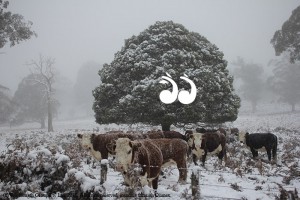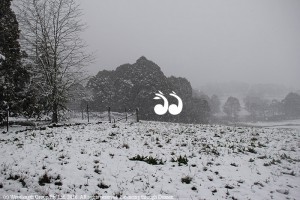Pretty, but Tough for Farming
THE snow may be scenic, but for farmers it presents challenges with cattle losing weight and poisonous plants being the first to break through the snow attracting the hungry stock.
Cath Payne, a farmer at Tomalla, said the early snow fall adds an extra farming risk that is difficult to mitigate.
“The snow here used to start in September, but this in July is really early compared to the last 15 years,” said Ms Payne.
“I don’t know if it has something to do with the changing rainfall where we are not getting rain in February and March and we’re getting it in winter and then earlier snow falls,” she said.
“What normally saves us is we usually get all of our rain in February and March and you have turnips and rye grass that would be knee high before you put cattle on it, but that didn’t happen this year because it stopped raining at the end of January.
“This year is looking very bleak ad that’s why we’ve been feeding for six weeks, before it got cold.
“There is a direct impact on cattle by the snow, we weighed some cattle a week before it snowed and we sold them last week and they had lost about 12 kilos,”she said.
“That’s a fair it of money, at $3.30 a kilo and you multiple that out by a truckload which is about 50 and that adds up fairly quickly,” she said.
“Also, after a dump of snow the first thing that pokes through is bracken and bracken is toxic to cattle, so you can lose a lot of cattle because that is all they can eat,” Cath Payne said.
While the snow does not bring any upsides during winter, in spring it does help with good soil moisture.
“All of the springs are over flowing and where we are we get the melt from Polblue the water table tops up and the soil moisture profile is good so as long as it warms up fairly quickly you get an immediate response,” said Ms Payne.
“The colder and the wetter it is the longer it takes for the soils to warm up because you won’t get grass until the soil is about 14 degrees, except for rye grass and turnips,” she said.
“This year they are talking about a very wet winter, which probably means more snow, it is beautiful but when you are out in it loading cattle in minus one and that is just uncomfortable to say the least,” Cath Payne laughed.
 scone.com.au
scone.com.au
